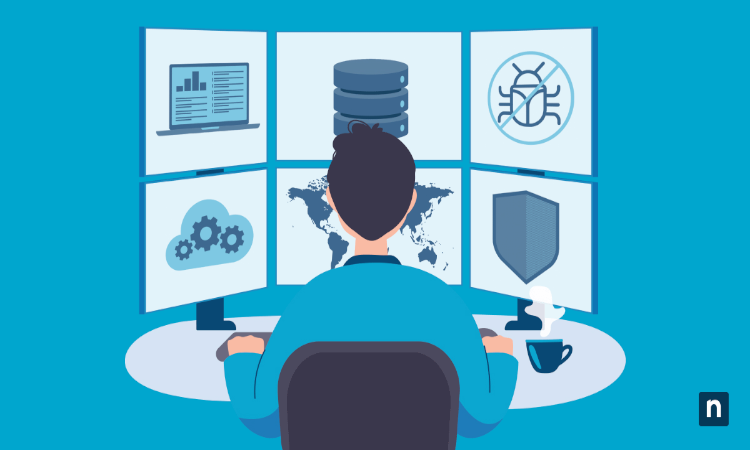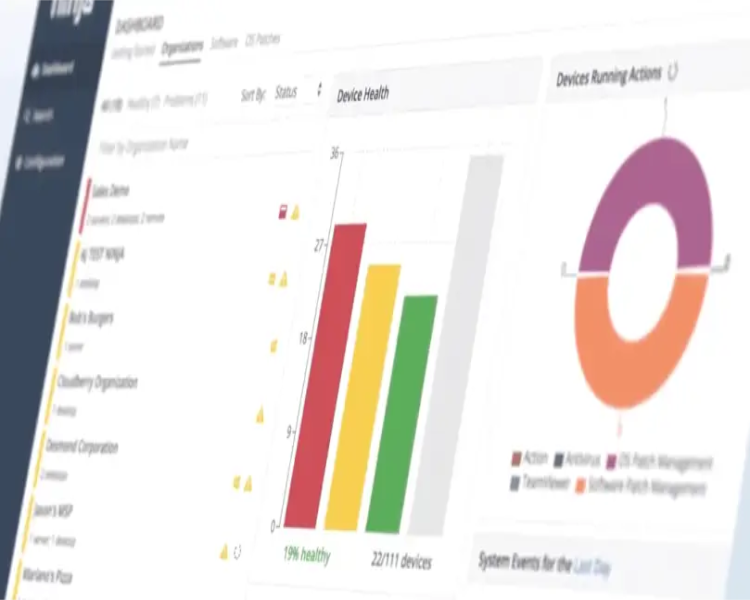Automation & ServiceEmpowering IT Efficiency: The NinjaOne Transformation Journey
In leading the NinjaOne RMM Solution Deployment, we revolutionized our IT support and infrastructure management, transforming an underleveraged tool into the backbone of our IT operations. This project not only streamlined our ticketing and patch management processes but also integrated essential communication platforms, enhancing operational efficiency and security across the board. By deploying NinjaOne to its full potential, we set a new benchmark for proactive IT service delivery and management within our organization.
Higlights
- NinjaOne
- Teams
- SMTP
- Webhooks
- Patch Management
Project Overview
Undertaking the NinjaOne RMM Solution Deployment project, I was tasked with transforming our existing, underutilized RMM tool into the central nervous system of our IT support and management framework. Inherited from my predecessor, NinjaOne was initially selected for its potential but lacked proper configuration and integration into our daily operations. My goal was to fully harness NinjaOne's capabilities, integrating it seamlessly with our communication tools like Teams, establishing an efficient ticketing system, and automating patch management, thereby streamlining IT processes and enhancing our support responsiveness and system reliability.
Objectives
The project was driven by key objectives aimed at maximizing operational efficiency and improving IT service delivery across the organization. These included:
- Establishing a robust ticketing system to streamline issue tracking and resolution.
- Automating patch management to ensure system security and up-to-date software across all devices.
- Integrating NinjaOne with Microsoft Teams and email for versatile ticket submission options, enhancing accessibility for users.
- Optimizing IT workflows and documentation through NinjaOne to improve team productivity and service quality.
Technical Solution and Implementation
The implementation phase began with a deep dive into NinjaOne's platform to configure and optimize it for our environment. This involved:
- Building out the ticket system from the ground up, defining workflows, ticket statuses, and notification rules to ensure clear communication and efficient issue resolution.
- Setting up patch management policies to automate the deployment of software updates, minimizing vulnerabilities and ensuring compliance with security standards.
- Creating webhooks and SMTP configurations to allow ticket submissions directly from Microsoft Teams and email, providing flexibility in how users report issues.
- Developing Standard Operating Procedures (SOPs) like 'How to Work a Ticket' and 'How to Submit a Ticket', to establish clear guidelines for IT staff and end-users, ensuring consistency and clarity in the ticketing process.
These steps required close coordination with various teams and stakeholders, leveraging my leadership skills to align IT strategies with organizational goals and user needs.
Results and Leadership Reflection
The deployment of NinjaOne as a fully integrated RMM solution marked a significant advancement in our IT management capabilities. Notably, the project:
- Enhanced our ability to quickly respond to and resolve IT issues, improving overall user satisfaction and system uptime.
- Streamlined patch management, significantly reducing the risk of security breaches and ensuring software compliance.
- Facilitated a more dynamic and flexible approach to ticketing, with multiple submission methods leading to better engagement from users across the organization.
Reflecting on the project, my role as a leader was crucial in bridging the gap between technology potential and practical application. By fostering collaboration, advocating for user-friendly solutions, and driving the adoption of best practices, I was able to guide my team and the organization through a transformative process, setting a new standard for IT efficiency and effectiveness.

